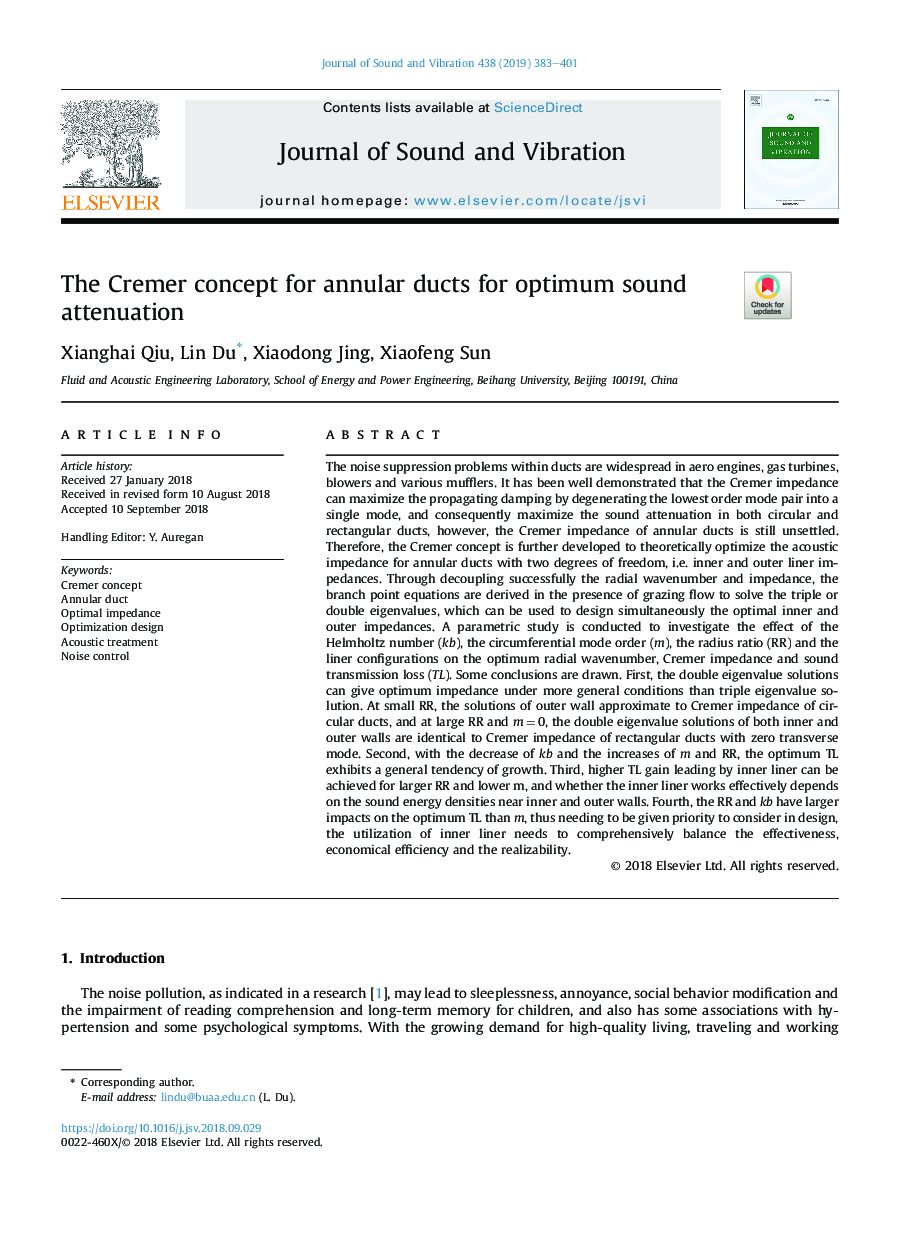| کد مقاله | کد نشریه | سال انتشار | مقاله انگلیسی | نسخه تمام متن |
|---|---|---|---|---|
| 11024180 | 1701176 | 2019 | 19 صفحه PDF | دانلود رایگان |
عنوان انگلیسی مقاله ISI
The Cremer concept for annular ducts for optimum sound attenuation
دانلود مقاله + سفارش ترجمه
دانلود مقاله ISI انگلیسی
رایگان برای ایرانیان
کلمات کلیدی
موضوعات مرتبط
مهندسی و علوم پایه
سایر رشته های مهندسی
مهندسی عمران و سازه
پیش نمایش صفحه اول مقاله

چکیده انگلیسی
The noise suppression problems within ducts are widespread in aero engines, gas turbines, blowers and various mufflers. It has been well demonstrated that the Cremer impedance can maximize the propagating damping by degenerating the lowest order mode pair into a single mode, and consequently maximize the sound attenuation in both circular and rectangular ducts, however, the Cremer impedance of annular ducts is still unsettled. Therefore, the Cremer concept is further developed to theoretically optimize the acoustic impedance for annular ducts with two degrees of freedom, i.e. inner and outer liner impedances. Through decoupling successfully the radial wavenumber and impedance, the branch point equations are derived in the presence of grazing flow to solve the triple or double eigenvalues, which can be used to design simultaneously the optimal inner and outer impedances. A parametric study is conducted to investigate the effect of the Helmholtz number (kb), the circumferential mode order (m), the radius ratio (RR) and the liner configurations on the optimum radial wavenumber, Cremer impedance and sound transmission loss (TL). Some conclusions are drawn. First, the double eigenvalue solutions can give optimum impedance under more general conditions than triple eigenvalue solution. At small RR, the solutions of outer wall approximate to Cremer impedance of circular ducts, and at large RR and mâ¯=â¯0, the double eigenvalue solutions of both inner and outer walls are identical to Cremer impedance of rectangular ducts with zero transverse mode. Second, with the decrease of kb and the increases of m and RR, the optimum TL exhibits a general tendency of growth. Third, higher TL gain leading by inner liner can be achieved for larger RR and lower m, and whether the inner liner works effectively depends on the sound energy densities near inner and outer walls. Fourth, the RR and kb have larger impacts on the optimum TL than m, thus needing to be given priority to consider in design, the utilization of inner liner needs to comprehensively balance the effectiveness, economical efficiency and the realizability.
ناشر
Database: Elsevier - ScienceDirect (ساینس دایرکت)
Journal: Journal of Sound and Vibration - Volume 438, 6 January 2019, Pages 383-401
Journal: Journal of Sound and Vibration - Volume 438, 6 January 2019, Pages 383-401
نویسندگان
Xianghai Qiu, Lin Du, Xiaodong Jing, Xiaofeng Sun,